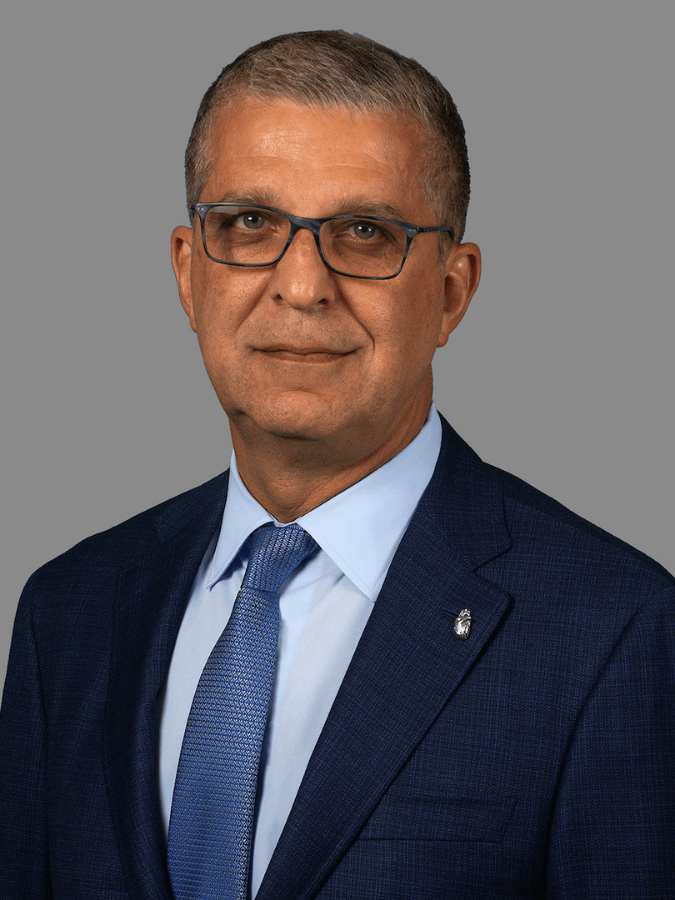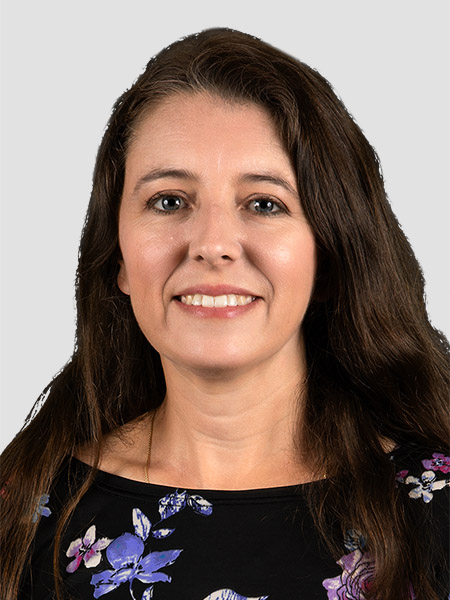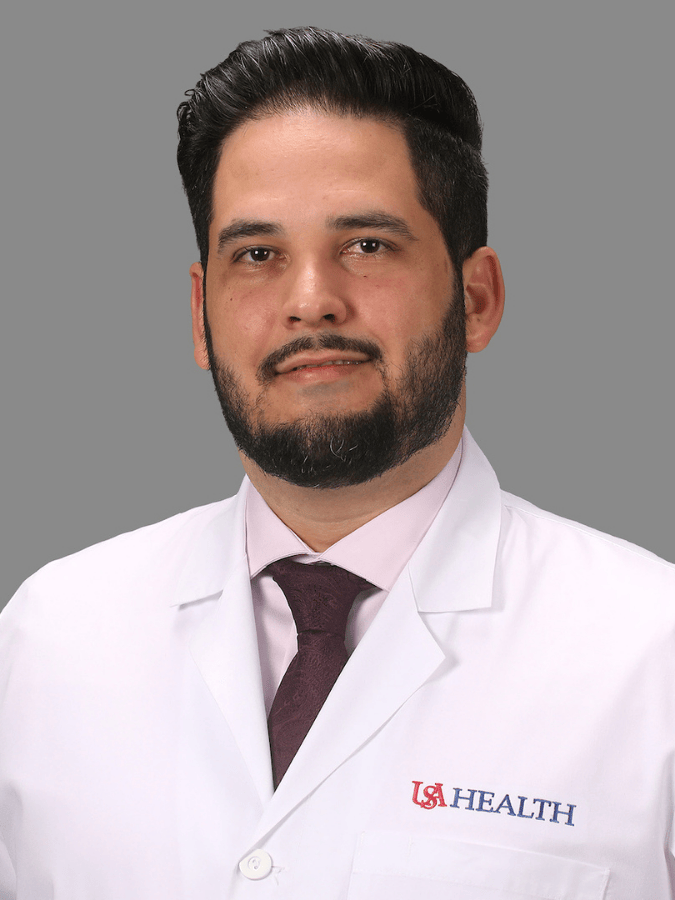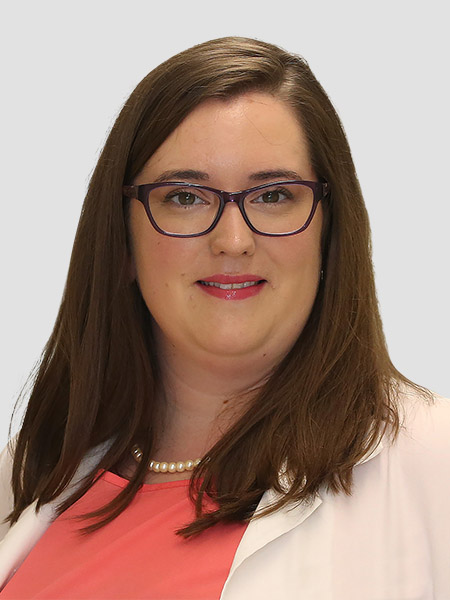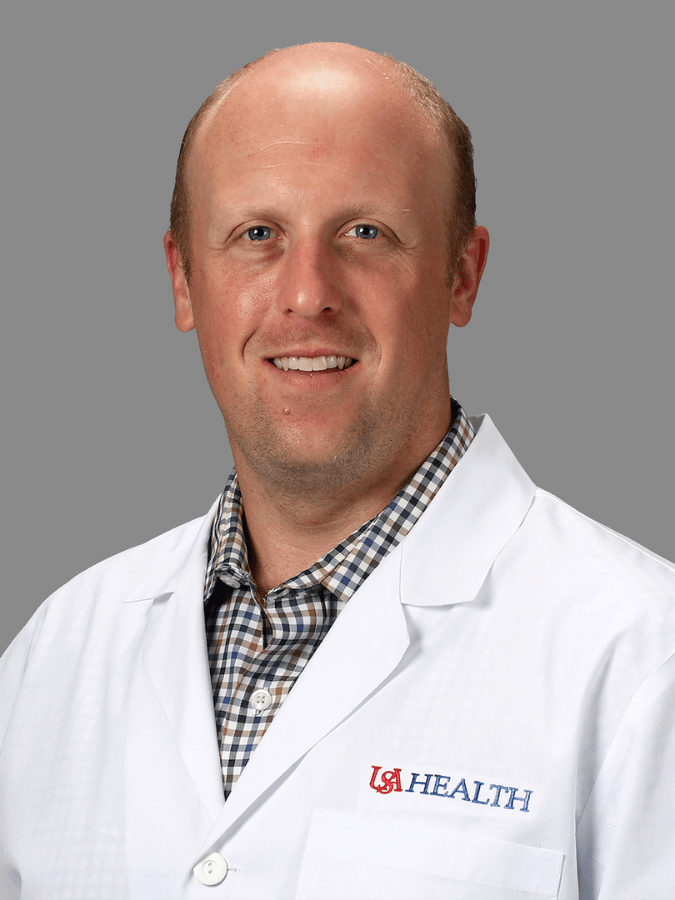Internal Medicine / Pediatrics Combined Residency Program
Find out about the Internal Medicine / Pediatrics Combined Residency Program from our residents and faculty.
Learn more about residencies and fellowships at the University of South Alabama and life on the Gulf Coast.
Thank you for your interest in the Combined Internal Medicine-Pediatric Residency Program at the University of South Alabama in Mobile, AL.
The University of South Alabama offers a four-year residency program for combined training in Internal Medicine and Pediatrics. Training occurs in a friendly learning environment within the Departments of Internal Medicine and Pediatrics. Program graduates are prepared to enter both specialties in a variety of settings including community-based primary care, hospitalist, academic clinician educator and subspecialty fellowship training.
Pediatric training occurs at USA Health Children's & Women's Hospital, a free-standing facility dedicated to providing quality care to the children and women of the Gulf Coast area. Internal Medicine training occurs primarily at the USA Health University Hospital, an academic tertiary referral center.
Please take a moment to explore our site and learn more about our program.
![]()
![]()
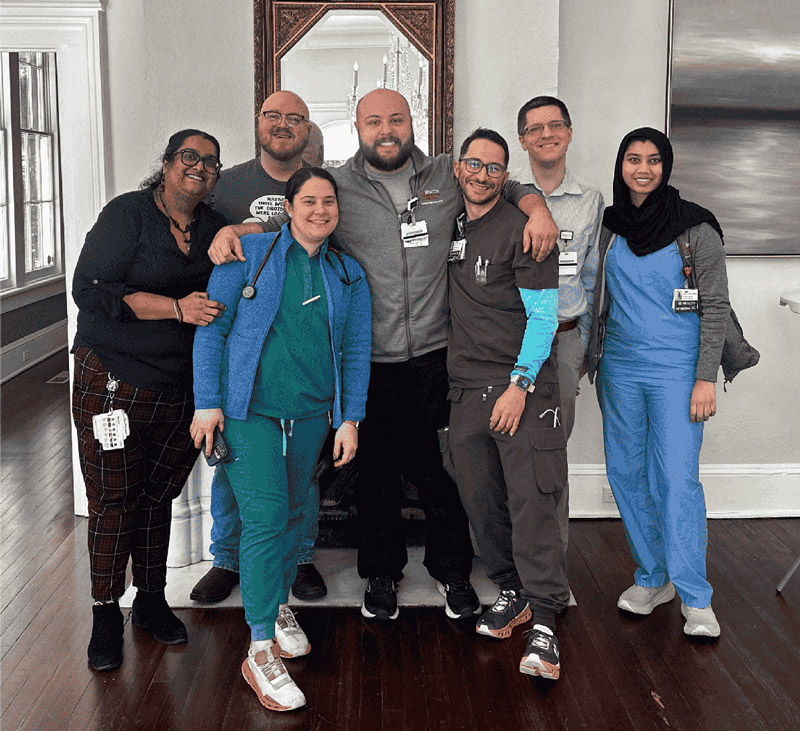 The Internal Medicine and Pediatrics program at the University of South Alabama is
a small, university based program that focuses on the development of physicians not
only as excellent clinicians but altruistic providers as well. Throughout the four
years of training, we help residents reach their career goals by providing engaging
education activities, diverse patient experiences, and one on one mentoring.
The Internal Medicine and Pediatrics program at the University of South Alabama is
a small, university based program that focuses on the development of physicians not
only as excellent clinicians but altruistic providers as well. Throughout the four
years of training, we help residents reach their career goals by providing engaging
education activities, diverse patient experiences, and one on one mentoring.
Residents in our program complete 24 total months of Pediatrics and 24 total months of Internal Medicine alternating between University Hospital and Children’s and Women’s Hospital. Residents rotate in 4 week blocks throughout the year and switch between hospitals every 3-4 blocks allowing scheduling flexibility and additional experiences.
Med-Peds residents participate in the clinics of both categorical programs. Med-Peds residents have clinic every week on Thursday afternoons. Weeks alternate between Internal Medicine and Pediatrics clinic. This assignment will be consistent throughout the entire 4 years of residency.
We have a capacity of 9 to 10 residents in the program and offer 2 positions most years.
Dr. Benjamin Estrada
Professor and Interim Chair of Pediatrics
Medical School: Universidad Francisco Marroquin, Guatemala City, Guatemala
Residency: University of South Alabama College of Medicine, Mobile, AL
Fellowship: Tulane University/Louisiana State University, New Orleans, LA
Dr. Nasser Lakkis
Professor and Chair of Internal Medicine
Medical School: American University of Beirut, Beirut, Lebanon
Residency: Baylor College of Medicine, Houston, TX
Cardiology and Advanced Interventional Cardiology Fellowship: Baylor College of Medicine, Houston, TX
Dr. Grace Hundley
Internal Medicine & Pediatrics Program Director
Assistant Professor of Internal Medicine & Pediatrics
Medical School: University of South Alabama, Mobile, AL
Residency: University of South Alabama, Mobile, AL
Dr. Angel Gonzalez Rodriguez
Internal Medicine & Pediatrics Associate Program Director
Assistant Professor of Internal Medicine
Medical School: University of Medical Sciences of Havana, Havana, Cuba
Residency: University of South Alabama, Mobile, AL
Dr. Anna Foust
Assistant Professor of Internal Medicine & Pediatrics
Medical School: University of South Alabama, Mobile, AL
Residency: Geisinger Medical Center, Danville, PA
Dr. Fred Rossi
Associate Professor of Internal Medicine & Pediatrics
Hospitalist
Medical School: William Carey College of Osteopathic Medicine, Hattiesburg, MS
Residency: University of South Alabama, Mobile, AL
Ellen Maddox
Internal Medicine & Pediatrics Residency Program Coordinator
Mission
The mission of the University of South Alabama (USA) Internal Medicine/Pediatrics program is to train residents in the knowledge, skills, and attributes to provide effective, efficient, and compassionate care to the communities they serve as both patient-centered primary physicians and community leaders across the age span. We seek to provide a strong foundation in both general internal medicine and in general pediatrics to allow our graduates to practice in any clinical setting or career choice with a focus on primary care. This aligns with our sponsoring institution's mission statement: We help people lead longer, better lives.
Aims
By the end of the residency program the resident will
- Acquire the knowledge, skills, and attitudes to provide competent and cost effective care for patients across the lifespan.
- Acquire the technical skills to safely perform procedures as expected by the ABIM and ABP.
- Manage both routine and complex patient illnesses across the lifespan in inter-professional teams.
- Provide preventive health maintenance in both routine and complex patients across the lifespan in inter-professional teams
- Maintain effective relationships with patients, families, and the inter-professional healthcare team
- Provide compassionate and culturally responsive care regardless of race, ethnicity, gender, socioeconomic background, sexual orientation, or religious preferences.
- Advocate for patients, their families, and cohorts of patients at a local, regional, or national level.
- Provide timely and effective written and verbal communication with patients, peers, parents, caregivers, and the inter-professional team across a variety of clinical settings.
- Acquire the skills to be a lifelong learner by identifying practice gaps and utilizing evidence based resources to meet their individual needs.
For residents interested in pursuing post-residency training, the Internal Medicine Department has three 3-year fellowship programs available in the following subspecialties:
At this time, there are no fellowship programs available in the Department of Pediatrics.
The Med-Peds Residency educational program includes structured combination of clinical and elective rotations as well as internal medicine, pediatrics, and interdepartmental conferences.
Clinical Rotations
Rotations by Program Level
Below is the curriculum that Med-Peds residents complete during the training program
The curriculum meets all requirements set forth by the ACGME for Combined Internal
Medicine-Pediatric residency programs.
| Block | PGY 1 | PGY 2 | PGY 3 | PGY 4 |
|---|---|---|---|---|
| Block 1 | Peds Wards | Peds Wards | Peds Ambulatory | NICU |
| Block 2 | Peds Clinic | Subspecialty | Subspecialty | ICE |
| Block 3 | Adolescent | PICU | Peds Wards | Peds Wards |
| Block 4 | IM Wards | IM Wards | Float/Ambulatory | IM Wards |
| Block 5 | IM ID | Subspecialty | Subspecialty | IM Ambulatory |
| Block 6 | ICU | IM Wards | IM Wards | MICU |
| Block 7 | Newborn | Subspecialty | Elective | ICE |
| Block 8 | Peds Wards | Peds Wards | Peds Wards | NICU |
| Block 9 | Peds ER | Development- Behavioral Peds |
NICU | ICS |
| Block 10 | IM Wards | Elective | ICE | Peds ER |
| Block 11 | IM ER | IM Wards | MICU | Subspecialty |
| Block 12 | Cardiology | Elective | Elective | Elective |
| Block 13 | Med Peds Ambulatory |
Med Peds Ambulatory |
Elective | Elective |
Med-Peds Conferences
All Med-Peds residents attend the Med-Peds Conferences on the second and fourth Friday of each month.
Internal Medicine Conferences
While on Internal Medicine rotations, the following conferences are provided:
- Noon report with the Chairman weekly
- Academic half day weekly
- Grand Rounds weekly
- Journal Club every six weeks
- Morbidity and Mortality Conference every six weeks
- Jeopardy with the Chief Resident every six weeks
- Tumor Board every six weeks
- Ambulatory half day weekly (for residents on ambulatory block only)
- Other subspecialty conferences offered weekly/monthly
Pediatrics Conferences
While on Pediatrics rotations, the following conferences are provided:
- Morning Report
- Grand Rounds
- Pediatric Case Conference
- Residency Conference
- Subspecialty Conference
- Ambulatory Half Day while on ambulatory blocks
Thank you for your interest in our Internal Medicine and Pediatrics training program. The following is a list of Frequently Asked Questions, which covers the mandatory criteria for our program. All Intern appointments are made in accordance with the rules of the NRMP. For further instruction, please review the MyERAS Documents page in the ERAS FAQ section.
General Questions
How can I apply to your program?
You must apply through ERAS.
Do you participate in the National Residency Matching Program?
Yes.
How many positions do you have available through the match?
We offer at least 2 positions each year.
How many letters of recommendation must I have?
You must have at least three (3) recommendation letters. Note: ERAS allows a maximum of four (4) LoRs to be assigned to a program.
What are your USMLE score requirements?
Applicants must pass USMLE Step 1 on the first attempt. Most of our applicants have USMLE step 1 and step 2 scores of 220 or higher. However, we do not specifically exclude applicants based on the USMLE score as we carefully consider the entire application and encourage all interested students to submit applications to our residency programs. USMLE step 3 is not required to apply.
What are your COMLEX score requirements?
They are the same as the USMLE score requirements. Applicants must pass COMLEX step 1 and step 2 on the first attempt. Most of our applicants have COMPLEX step 1 and step 2 scores of 500 or higher. However, we do not specifically exclude applicants based on the COMPLEX score as we carefully consider the entire application and encourage all interested students to submit applications to our residency programs. COMPLEX step 3 is not required to apply.
How does continuity clinic work?
- We have separate Internal Medicine and Pediatrics clinics.
- Residents have one half day of clinic every week and alternate between Internal Medicine and Pediatrics clinics. This is decreased to 2 clinics a block for inpatient rotations. There is no clinic on ICU or ED blocks.
- During first and second year, there is a combined Internal Medicine & Pediatrics ambulatory block (2 weeks of each). During third and fourth year, there is 1 full block of both Internal Medicine and Pediatrics ambulatory clinic.
- While on Internal Medicine ambulatory block, there is an opportunity to rotate through different subspecialty clinics along with routine continuity clinic.
What do our residents do after graduation?
In the past several years:
- 6 Hospitalists
- 7 Outpatient Primary Care
- 1 Urgent Care
- 1 Allergy-Immunology Fellowship
- 1 Geriatrics Fellowship
- 2 Internal Medicine Chiefs
- 2 Hematology-Oncology
- 2 Nephrology
What is the board pass rate?
Over the past 4 years, the pass rate for Med/Peds residents for both Internal Medicine and Pediatrics boards is 100 percent for first-time test takers.
Program Director: Grace Hundley, M.D. - ohundley@health.southalabama.edu
Program Coordinator: Ellen Maddox - ermaddox@health.southalabama.edu
Address: 1700 Center St, Mobile, AL 36604
Phone: (251) 415-8586 • Fax: (251) 415-1387




